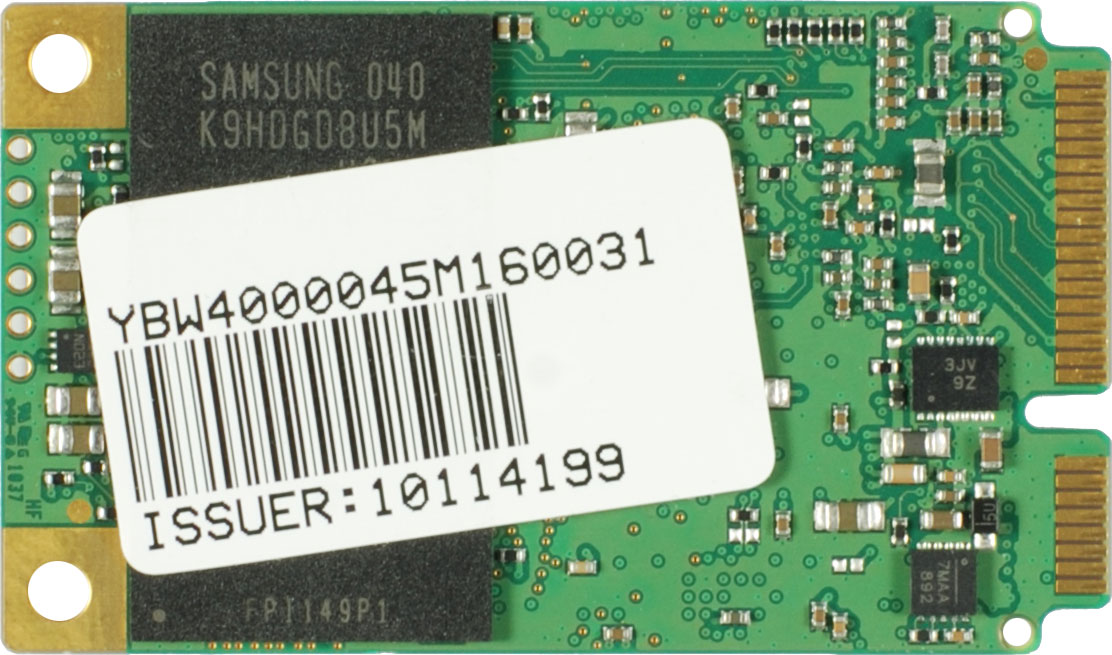Hands-On: A Second mSATA-Based SSD Emerges
When it comes to storage, the 3.5” and 2.5” form factors are most popular. But they're not always suitable for notebooks and netbooks. Samsung is the second vendor to introduce an mSATA-based SSD, after Intel demonstrated its SSD 310 earlier this year.
Another mSATA Example: Samsung MZMPA064
This is not the first mSATA SSD we’ve previewed; Intel sent us a sample of its 310-series SSD, which re reviewed in Intel SSD 310 80 GB: Little Notebooks Get Big Storage Flexibility. Both companies are going after similar markets. Samsung is promoting SSDs as system drives. Intel also sees these devices as primary storage in mobile systems, complemented by a larger hard disk that populates the sole 2.5" bay in most notebooks. By designing for mini PCI Express, it's possible to add performance without sacrificing capacity.
Bear in mind that Intel's SSD 310 centers on MLC-based NAND flash, making it most useful in dual-drive configurations where the SSD hosts an operating system and performance-sensitive apps. In contrast, the 20 GB SSD 311 employs SLC memory and is better suited for caching.
Samsung Adds To mSATA's Viability
At first we weren’t sure what to do with the mSATA-based SSD Samsung sent us. After all, you can't go to the store and buy one of these yet. However, as Apple, Intel, and Samsung continue working with notebook vendors to enable the infrastructure, you're more likely to see mSATA SSDs offered as upgrades when you build your notebook through an online configuration tool. Also, we couldn't help but note that Intel's drive sacrifices write performance in many instances, and we wanted to see if Samsung's mSATA solution shares the SSD 310's fate.
The Samsung mSATA is labeled MZMPA064 and it offers 64 GB total capacity. Samsung also has a 32 GB and a 128 GB flagship. We assume that larger capacities will pop up in the second half of this year, as the firm has already announced 64 Gb densities of its Toggle DDR 2.0 NAND flash. These will be based on a 20 nm manufacturing process, making the next generation pretty interesting from a performance, power consumption, and capacity standpoint. A look at Intel's and Samsung's datasheets tell us that power consumption supposedly decreases on the mSATA devices. Be that as it may, today's tests fails to confirm those claims.
Our sample employs four flash memory chips and the same MAX controller found on the company's PM810-series drives (known as the 470-series at retail). Therefore it also has 128 MB built-in cache memory. Since there is not a lot you can do with an mSATA SSD without a proper host system to try it out, we used a mSATA-to-2.5” SATA adapter for testing.
The mSATA-To-2.5” SATA Adapter
Get Tom's Hardware's best news and in-depth reviews, straight to your inbox.
Like Intel, Samsung sent us its mSATA SSD with an adapter that makes it possible to install the drive into a conventional drive pay or drive it using standard SATA power and data cables.
The greenish structure in the middle is a tray that takes the mSATA device. Once you insert the slot card into the tray, you only have to push the tray towards the connector and you’re set (see photo below). The adapter can go straight into JBOD drive bays or it can be connected using regular SATA cables.
Since the mSATA concept is electrically SATA-compatible, it's pretty easy for motherboard makers to implement slots for mSATA. All they have to do is take one SATA port from the chipset’s storage controller and route it to a mini PCI Express slot used for mSATA.
Current page: Another mSATA Example: Samsung MZMPA064
Prev Page SSD Form Factors, Explored Next Page Form Factor Comparison


